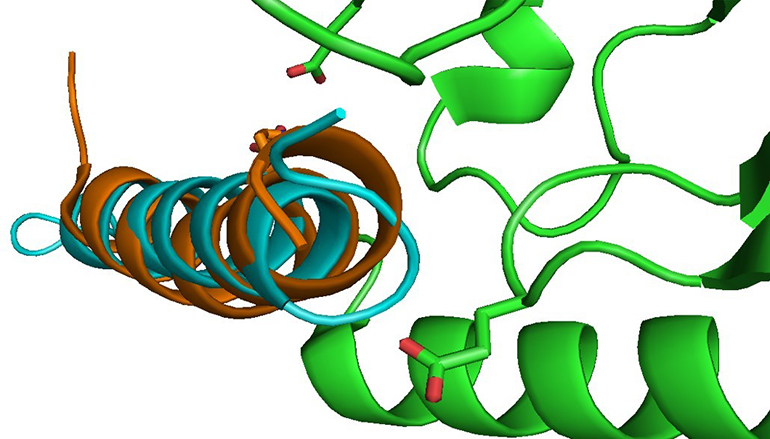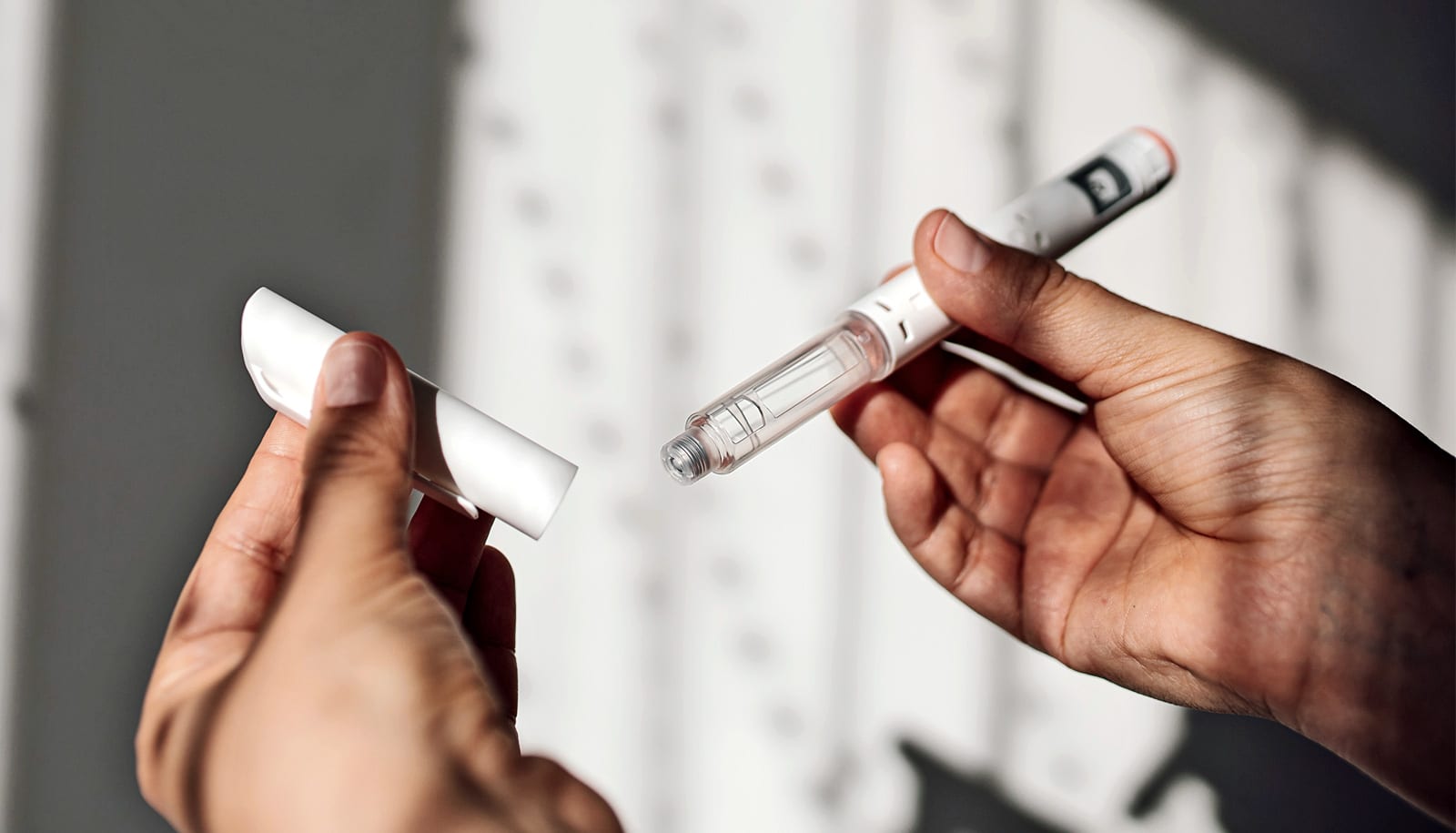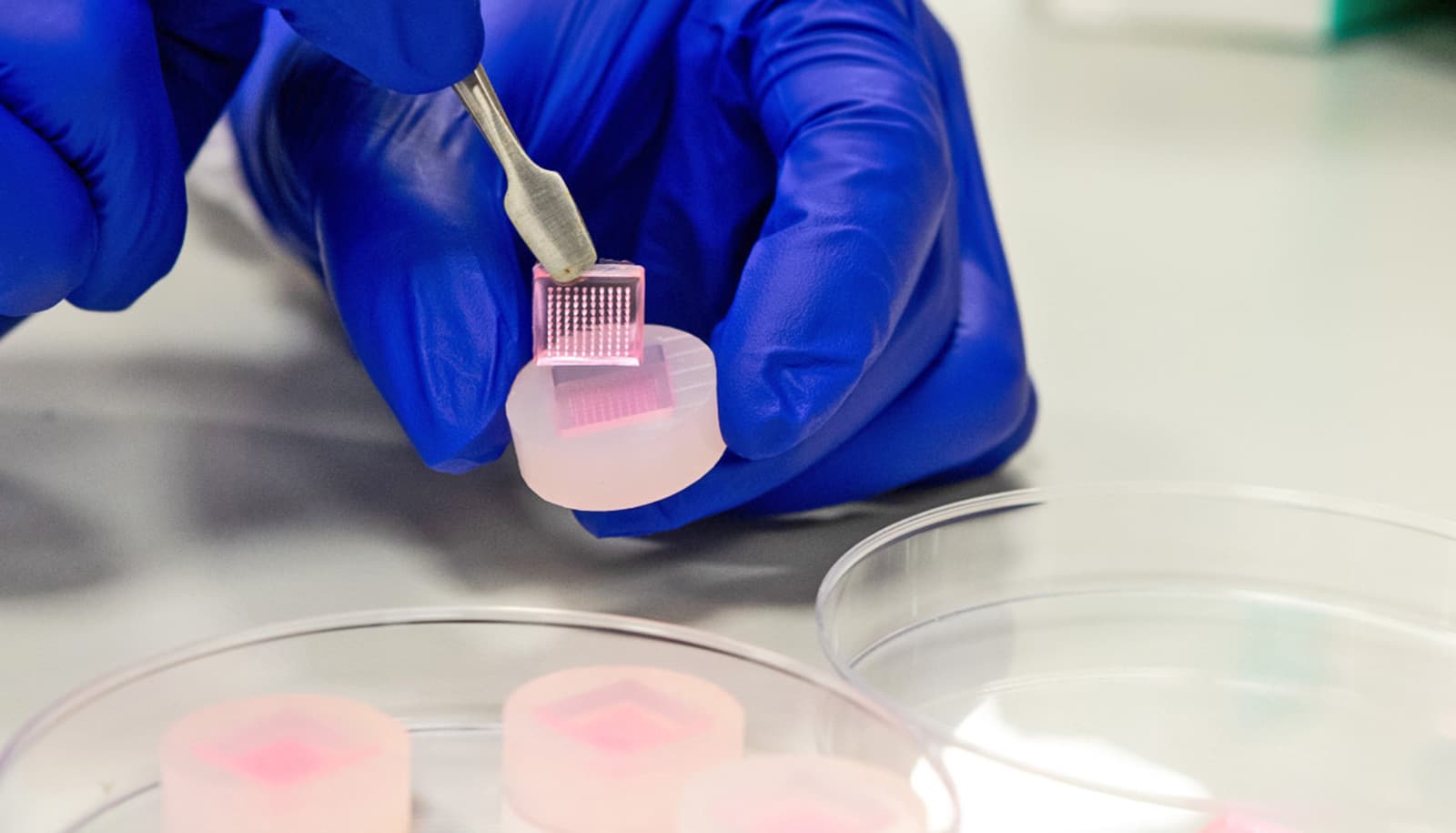A new treatment essentially cured lab animals of obesity and diabetes by lowering blood sugar levels and reducing body fat beyond all existing drugs, researchers report.
In preclinical trials, the new peptide—a combination of three gastrointestinal hormones—improved glucose sensitivity, reduced appetite, and enhanced calorie burning, researchers say.

The results advance clinical work from last year that showed that a peptide combining the properties of two endocrine hormones, GLP-1 and GIP, was an effective treatment for adult-onset diabetes. The new molecule includes a third hormone activity, glucagon.
“This triple hormone effect in a single molecule shows results never achieved before,” says co-first author Brian Finan, a scientist at the Helmholtz Diabetes Center who earned his PhD in biochemistry in the lab of Richard DiMarchi, professor of chemistry at Indiana University.
[related]
“A number of metabolic control centers are influenced simultaneously, namely in the pancreas, liver, fat depots, and brain.”
In constructing the new single-cell molecules with triple-hormone action, the researchers found they could reduce body weight in rodents by about 30 percent, almost twice as much as the GLP-1/GIP double hormone. The molecules are called triple agonists—three hormones combined molecularly that can bind to and activate receptors to produce certain biological responses.
“This peptide represents the first rationally designed, fully potent and balanced triple agonist ever achieved in the treatment of any disease,” DiMarchi says. “The benefits of the previously reported individual co-agonists have been integrated to a single molecule of triple action that provides unprecedented efficacy to lower body weight and control metabolism.”
In the paper published in the journal Nature Medicine, the team described the new results as “unparalleled” when compared to earlier tests using the three hormones alone and together as co-agonists. It is a clear demonstration that combining GLP-1, GIP, and glucagon can produce improved therapeutic effects.
The triple hormone specifically and equally targets three receptors of GLP-1, GIP and glucagon. GLP-1 and GIP predominantly contribute to enhancing insulin action and reducing blood glucose. GLP-1 also curbs appetite, while glucagon primarily increases the long-term rate at which calories are burned and improves liver function.
Matthias Tschöp, director of the Institute for Diabetes and Obesity at the German Research Center for Environmental Health, is a study coauthor.
Source: Indiana University


